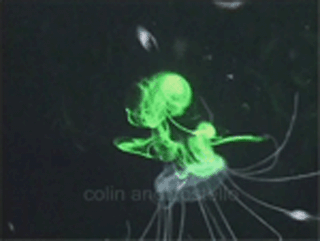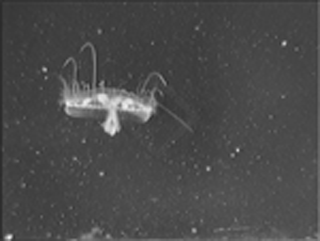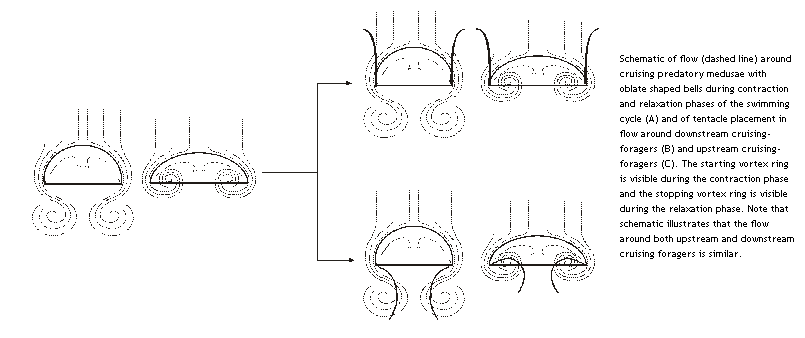Convergence upon similar morphological traits is common among predators feeding on similar prey in similar environments. Aboral placement of tentacles during swimming appears to be such a trait and has evolved in parallel among several medusan lineages. Here we examine this trait in a scyphomedusa and two hydromedusae representing different lineages within the Medusozoa with the goal of evaluating whether aborally directed tentacles function similarly among these varied medusae. We analyzed flow generation, swimming kinematics and swimming behavior of Craspedacusta sowerbyi (Hydrozoa, Limnomedusa), Nausithoa punctata (Scyphozoa, Coronata), Solmissus albescens (Hydrozoa, Narcomedusa) and the prey capture mechanics of N. puncatata. The three species swam similarly and generated similar wake structures in comparison to each other and to oblate medusae with trailing tentacles. Foraging behavior, as measured by the percent of time spent swimming, was similar for medusae possessing both leading and trailing tentacle placement. These findings indicate that medusae possessing both types of tentacle placement swim and forage similarly but that medusae with leading tentacles capture prey upstream while medusae with trailing tentacles capture prey downstream of vortices generated at the bell margin during swimming. These differences in tentacle placement relative to flow around the medusae may have important consequences for prey capture and trophic interactions
Sean P. Colin, John H. Costello and Heather Kordula Mar. Ecol. Prog. Ser., In press

Download the Paper (PDF File, 1,065KB)
Videos (click thumbnails):

Flow visualization of the upstream rower Solmissus albescens. Notice the stopping vortex inside the bell and starting vortex in the trailing wake, both characteristic of rowing medusae. The tentacles extend aborally in to regions of flow with little disturbance from the medusae allowing it to forage as a stealth predator. (WMV File 2,162 KB)

Foraging behavior of the upstream hydromedusa Craspedacusta sowerbyi. Like Solmissus the tentacles extend aborally. (Quicktime File 701 KB)
 Jellyfish flow
Jellyfish flow





